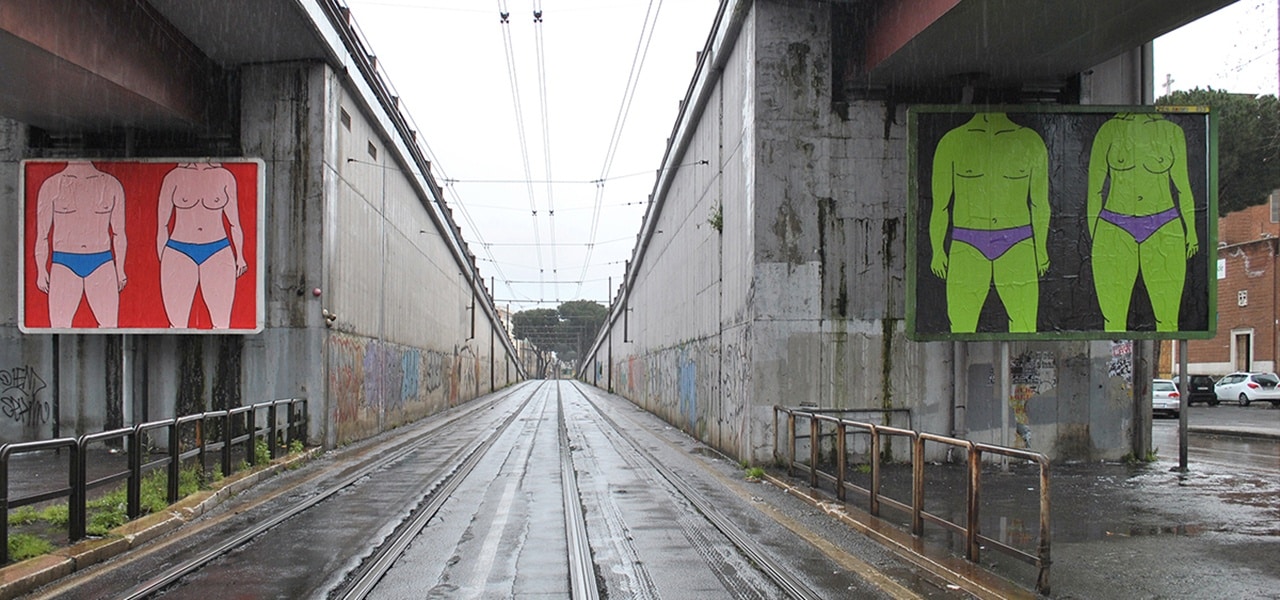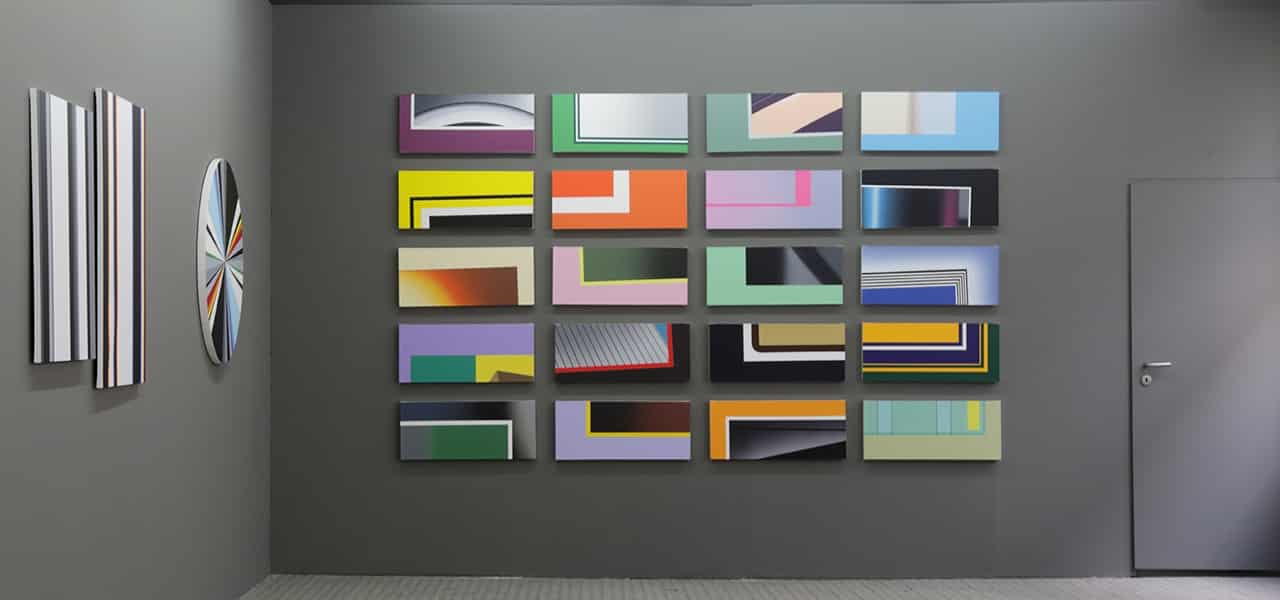
Present on the street art scene since the early eighties, French artist OX became widely known for his innovative and creative adbusting endeavors. Using commercial billboards as his preferred media, OX developed a unique approach to public art, creating playful imagery perfectly situated into the surrounding environment. Unlike those culture jammers who hijack advertisements in order to make explicit statements about social and political issues, OX favors subtle, humorous and ironic approach, free of the moralizing features, but not without a critical potential. Relying on the notion of aesthetic shock OX uses minimalist, abstract imagery to speak his mind and make witty statements about the world we live in, surprising the beholders and initiating conversations about the creative use of the public spaces.

Beginnings and Influences
Now considered one of the most experienced urban art creatives, OX started his work in the early eighties while studying at the Arts Déco School of Paris. In 1983, he participated in the making of the Blank graphzine, becoming part of the group of artists inspired by the Bazooka and Figuration Libre movements. While adopting new path in his career and moving from screen-printing to live painting sessions, the French artist also adopted a new moniker made of two simple, reversible letters O and X which became his signature in the days to come. The turning point in the work of OX was the discovery of Jean Faucheur’s work. OX and his fellow artists of the Blank graphzine became fascinated with Jean Faucheur’s large paintings pasted on the billboards in the city of Paris and joined Faucheur, embracing his approach and founding a group titled Les Frères Ripoulin. With the growing interest in street art expressions, still a novelty in the eighties, gallerists became interested in the works of the artists gathered around Les Frères Ripoulin and their first group exhibitions in Paris and New York followed, along with a monumental collage project in 1985.

Developing a Unique Style
OX took part in several group exhibitions with the members of Les Frères Ripoulin until 1990 when the group disbanded. Once united in their impulsive expression inspired by Pop Art and kitsch aesthetics, artists from the group embarked on their separate journeys through the art world in the nineties. While Pierre Huygue and Claude Closky started experimenting with new media, OX continued to paint, developing his distinct visual language and producing a line of studio works on canvas. This classical painting period was short-lived and in 1993, OX was back on the streets, placing a paste up on his own for the first time and reinventing the culture jamming practice. Site specificity and contextual relationship between the artwork and the surrounding environment became essential to OX’s new public works, which he likes to call “Affichages”. With a keen eye on details, the artist started creating imagery that extends beyond the billboard frame into the surrounding urban setting, adding a sense of playfulness and harmony into the intrusive world of commercial adverts. Working on oversized billboards, OX often creates simple, minimalist forms, geometric and abstract compositions that blend into the public spaces in which they are created. By centering on the idea of interaction between the painting and its environment, OX’s works often gain extraordinary sculptural or three-dimensional qualities. Whether his interventions are based on the content of advertisements and executed in-situ or created in the studio first and later placed in a suitable location, the works of OX meld perfectly with the backdrop and cannot be viewed outside of the context of their creation. Apart from his urban interventions, OX creates studio works as well, exhibiting in solo and group exhibitions internationally and participating in urban art festivals worldwide. In 2007, OX and Faucheur initiated a project titled Le MUR (The Wall), bringing together young urban artists and setting up a platform for young talents to participate in fortnightly billboard painting events.

International Recognition and Recent Achievements
OX has been present on the street and urban art scene for more than three decades, yet his works became internationally recognized and appreciated recently, after the street art craze fueled by the Internet and social networks kicked off in 2000’s. The late recognition can best be explained by the genuine nature of OX’s interventions, which are ephemeral and rely on the reality of public spaces, therefore staying unreachable to the wider audience. The documentation of the works and online display of the billboard takeovers allowed the artist to preserve his short-lived interventions and diffuse them globally, achieving a visibility he deserves as one of the street art pioneers. Many of OX’s works from his impressive oeuvre have been taken down and destroyed over the years, which is why cultural theorist Alain Bieber and artist and curator Andreas Ullrich engaged in a project of documentation of OX’s public pieces in a comprehensive monograph publication, gathering the artist’s best works from 2000 to 2014. The release of the book “Affichage Libre / Plakatkunst / Public Posters” was followed by a successful exhibition of OX’s classic and new works at Open Walls Gallery in 2015. Starting from the end of January 2016, OX will participate in two exciting group shows: TRANSBORDER at Fabien Castanier Gallery in Culver City and Urban Abstract at Mini Galerie in Amsterdam.